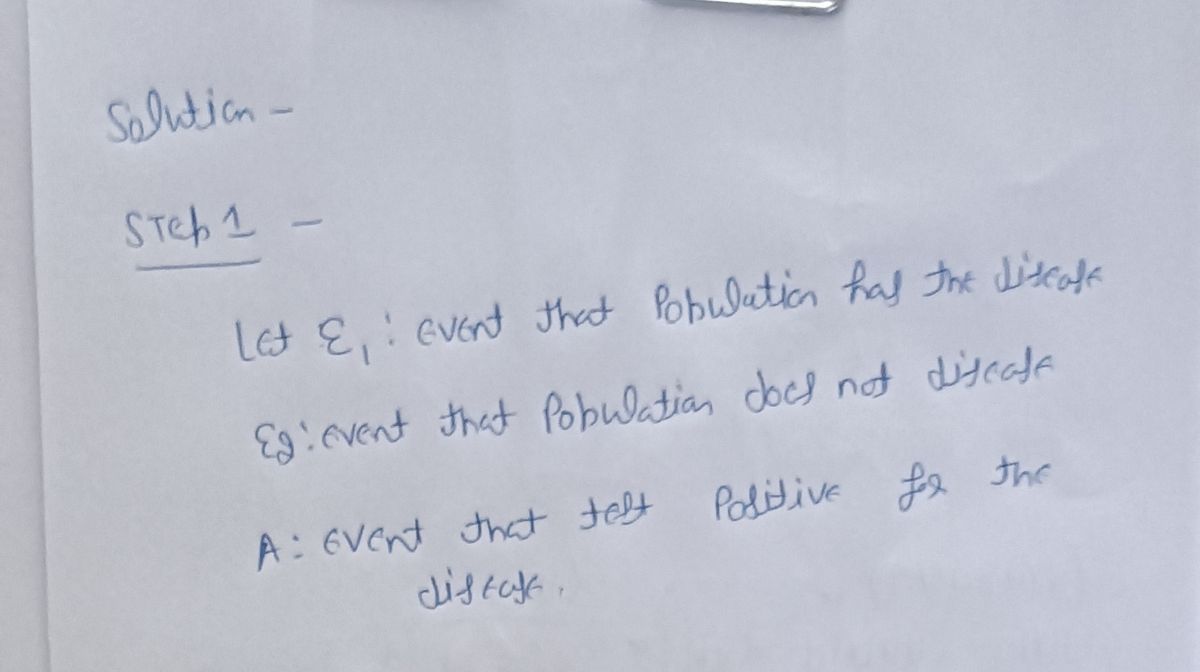This is a Statistics problem. Please explain each step thoroughly. The problem I'm having issues with is shown below: Suppose there is a new test that detects whether people have a disease. If a person has the disease, then the test correctly identifies that person as being sick 99.9 percent of the time (the sensitivity of the test). If a person does not have the disease, then the test correctly identifies the person as being well 97 percent of the time (the specificity of the test). Suppose that 2 percent of the population has the disease. Find the probability that a randomly selected person has the disease given that they test positive for the disease.
This is a Statistics problem. Please explain each step thoroughly.
The problem I'm having issues with is shown below:
Suppose there is a new test that detects whether people have a disease. If a person has the disease, then the test correctly identifies that person as being sick 99.9 percent of the time (the sensitivity of the test). If a person does not have the disease, then the test correctly identifies the person as being well 97 percent of the time (the specificity of the test). Suppose that 2 percent of the population has the disease. Find the probability that a randomly selected person has the disease given that they test positive for the disease.

Solution

Trending now
This is a popular solution!
Step by step
Solved in 2 steps with 2 images









